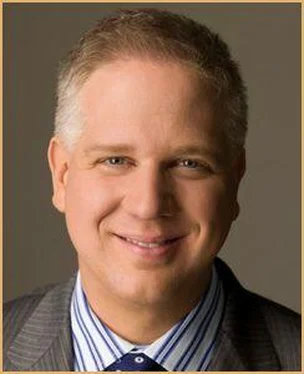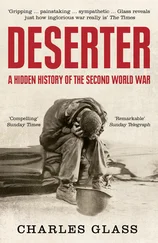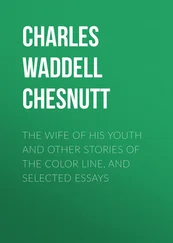Whitside looked conflicted. He wanted to defend himself, but did not want to put the blame squarely onto Forsyth, his commanding officer. The general did not speak, allowing the awkward silence to linger.
Finally, Whitside answered. “Sir, I was following orders from my commanding officer.”
“Colonel Forsyth told you to place your heavily armed men in a rough square facing each other?”
“I was instructed to encircle the Sioux so that no one could escape. It was a several-hundred-yard enclosure.”
Miles shook his head. He was sure that most of the troopers had been killed or injured by friendly fire. It was ironic, he thought, that the best way for the Sioux to kill his soldiers would have been for them to duck while the soldiers shot each other.
“What happened the night before the incident?” Miles asked.
Whitside shifted his eyes and locked them on to the general. “The night before, sir?”
“You heard me.”
“Sir, I presume you mean the celebration of the capture of Big Foot. A few men drank, but not to excess.”
Miles nodded. “Okay, then tell me about the morning. Prior to the first shot.”
“After voluntary disarmament failed, we initiated a search for weapons. The colonel was highly annoyed with Big Foot’s lying about guns and weapons being hidden in camp.”
“How did the Sioux react to the search?”
“I saw anger on their faces, but they complied.” Whitside hesitated before adding, “The interpreter told us that Big Foot ordered his men to remain calm and allow the search.”
“What was found?”
“Colonel Forsyth’s anger turned out to be justified. Search teams found more rifles, pistols, knives, tomahawks, scissors, and lances. Everything was heaped onto a huge stack. The colonel lectured Big Foot on duplicity, but I don’t think the Indians grasped his meaning. They’re naturally deceitful.”
Whitside looked like he was waiting for a reaction, but the general remained stoic. “I understand that Black Coyote ignited the altercation? He brandished a pistol?”
“Correct, sir. When two cavalrymen tried to take it from him he fired it into the air. Possibly as a signal.”
“Then what?”
“Then all hell broke loose.”
“And yesterday?”
“What about yesterday, sir?”
“Why did Colonel Forsyth need to be rescued?”
“We engaged over four thousand Sioux. We had no visibility due to the blizzard and we were badly outnumbered.”
“Colonel Forsyth was ordered to gather up the hostile Sioux at White Clay Creek and escort them back to the reservation. He ended up outflanked and pinned down in a valley. If the Ninth Calvary hadn’t rescued him you wouldn’t be sitting in front of me today.” He paused to let his words sink in. “Did it occur to you that the hostiles, after seeing what happened to Big Foot, might try to fight?”
Whitside flinched before making eye contact again. “Sir, you should ask Colonel Forsyth about his command decisions during combat.”
General Miles contemplated further questions but decided they would lead nowhere. The officers and troops were already circling the wagons, painting a self-serving picture of a stand-up battle where every soldier had shown forbearance and then, only when absolutely necessary, tenacity and courage under fire.
“Dismissed.”
Whitside stood and walked to the door. Then he turned back and asked, “Does the general anticipate a board of inquiry?”
“I said you were dismissed, Major.”
Wounded Knee Creek, South Dakota
January 1, 1891
White Lance examined the ice-covered corpses of his fellow Lakota Sioux. The blizzard that had rolled in after the slaughter had frozen the bodies exactly as they’d fallen. He saw depressions in the frozen ground where some of the bodies had been removed by friends or family to be buried.
At first, White Lance thought himself lucky to have survived the massacre. But now, as he surveyed the pained faces of the men, women, children, and babies strewn about the ground, he was no longer so sure.
The white soldiers, including their chief, a man they called General Miles, kept yelling at him to leave the dead and go to the hills to look for the living, but White Lance pretended not to understand. He had been instructed by his chief to memorialize each of the dead and how they had fallen. Tribal history was an important Sioux tradition and White Lance had been entrusted with the duty to ensure that the real story of what had happened here lived on.
The bodies were cold and stiff, and White Lance often had to turn them in order to see their faces. It was slow, gruesome work. A wagon soon came over a rise with six or seven Sioux huddled in back. General Miles seemed happy to see these survivors and yelled at the doctor to attend to them at once. How could a few live Sioux please a white man after he had killed so many? The world was incomprehensible.
Later that afternoon, the general called the eighty-four Sioux who’d been searching the bodies along with White Lance to gather around a wagon that served as a makeshift speaker’s platform. A Lakota interpreter stood by Miles’s side and translated.
“Thank you for coming here. It is a sad day and it must be overwhelming for you. We have discovered seven Sioux who would have died in this weather if you had not come to this place, so you have done well.”
White Lance wondered how the general would feel if these were his people—slaughtered without mercy. He willed his mind to shed anger because rage would interfere with his attempt to remember every detail of what he saw.
“We will demand an investigation of what has happened here, but there are no more survivors and it is now time for you to return to the reservation.”
Two old warriors stood shaking their heads. The eldest said, “You have no right to order us. We are a free people. We stay to bury our dead.”
The general spoke for a long time before the interpreter nodded his understanding.
“The great general says that if you return now . . . peaceably, none of you will be punished.”
“Punished?” The two old warriors looked incredulously at each other. “We do not understand. Punished for what?”
“You left the reservation. You participated in Ghost Dancing. You prepared for war. These things are against our treaty.”
Half of the Sioux stood and yelled. The interpreter did his best to explain their collective complaint to Miles. “They say that the white man has repeatedly broken the treaty.” The general held up his hand and nodded as if he understood. He spoke several sentences back to the interpreter.
“General Miles says there are food, blankets, and tools in those wagons. If you return peaceably to the reservation, they are yours. He will find out what happened here and those at fault will be disciplined. He also has people coming to bury the dead. It is best now that you leave this sad place. The spirits are not good.”
There would be more discussion, but White Lance knew that, in the end, they would leave Wounded Knee without further conflict. He also knew what would happen after they did. Earlier, along one side of the field, he’d seen soldiers drawing a long rectangular outline in the dirt. They were going to toss the bodies of his people into a common grave and throw dirt on them until they disappeared forever.
The white man wanted no reminders of what had happened here.
White Lance would remember everything.
Pine Ridge, South Dakota
January 6, 1891
General Miles flung the magazine onto the table in front of Whitside.
“Did you have anything to do with this story?”
Whitside looked down at an issue of Leslie’s .
“No, sir.”
He threw down a copy of Harper’s . Then the Evening Star , a Washington, D.C., newspaper. Then a heap of other newspapers from all across the country.
Читать дальше












